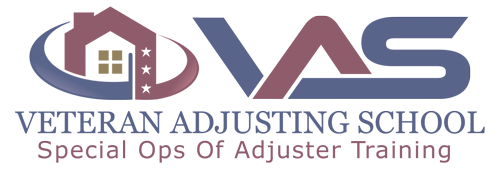By Guy Grand
You have probably heard that adjusters can make a great living working just part of the year. But if you are smart you are asking yourself “How much does an adjuster really make?” While it is true that adjusters can earn over six figures in a very short period of time, it is important to recognize the different types of adjusters and how the circumstances can affect your income.
Below is an excerpt from our book “Catastrophic Insurance Adjusting – Making it your Career”. In this section, I write about income, different types of adjusters, and why I chose to be an Independent Catastrophic Insurance Adjuster.
“When I was researching insurance adjusting as a career I found there were three distinct types of insurance adjusters: Staff adjusters, Public adjusters, and Independent adjusters. I chose independent adjusting as it gave me the ability to work for myself and be responsible for my own income. The harder I worked the more I made.
But the role and the income of each adjuster type can be very different. For example:
Staff Adjusters work directly for an insurance company. Staff adjusters are typically paid a salary. The Department of Labor statistics for insurance claims adjusters’ shows an average salary at $58,000 per year. There are more staff adjusters than independent adjusters, simply because the majority of claims are handled directly by the insurance company. Moreover, many people are looking for exactly what staff adjusting offers; a steady and reliable career in a stable industry. There are a lot of great benefits to working as a staff adjuster in addition to the steady paycheck. Some of the perks can be a company car, a company issued laptops, vacation, and sick pay, and health benefits are common. The downside to staff adjusting is that one typically has to have a college degree.
Public Adjusters are quite different than staff or independent adjusters as they work for the claimant (or insured), not the insurance company. Public adjusters are like lawyers and go after the insurance company for a larger settlement. Public adjusters are hired by people who don’t trust that they’ll get a fair settlement from the insurance company. Public adjusters are typically paid a percentage of the final claim by the insured; a percentage of an often inflated, final settlement. When I first started I thought maybe I’d be a public adjuster. After much research, I realized that if the staff or independent adjuster did their job properly, then I would only be taking money from the insured that otherwise was needed to complete the repairs. If the insurance settlement was $10,000 and the repairs cost $10,000 and the insured’s deductible is $1,000 then how does the public adjuster make money? The only way I calculated that was to inflate the final settlement and if that happens then everybody loses in the long run by the increased cost of insurance.
Independent Adjusters – It has been said by others that the average annual income for an independent adjuster is around $90,000. In my decade or more of experience, I found this to be about right. You can make six figures in six months. There have been years where I didn’t make that much, but there were years I made much more than that. What I have always liked most about being an Independent Adjuster or (IA) is that I am my own boss, my earnings are directly proportionate to my efforts, and my tax liability is lowered by my expenses.”
If you want to read more about what it is like working in the industry or how much money you will actually make, Click the link below to read the Free Ebook.
If you are ready to speak with someone who can help you better understand ALL the costs associated with becoming an Adjuster and where you can find a comprehensive package that includes the training, mentoring, field tools, technology, software and most importantly..
.the reputation you will need to be succesful in the field…just complete this
“Discovery Survey” and someone from our team will be in touch with you right away.

